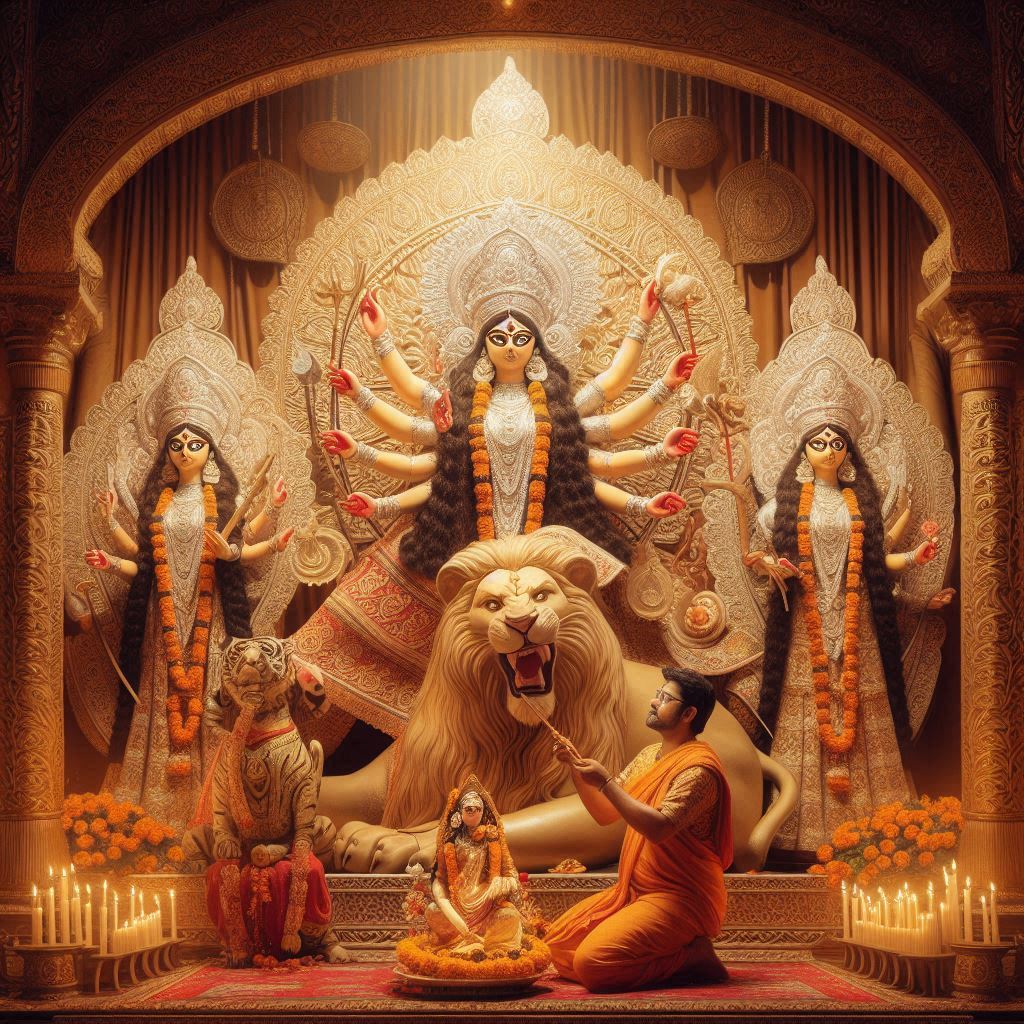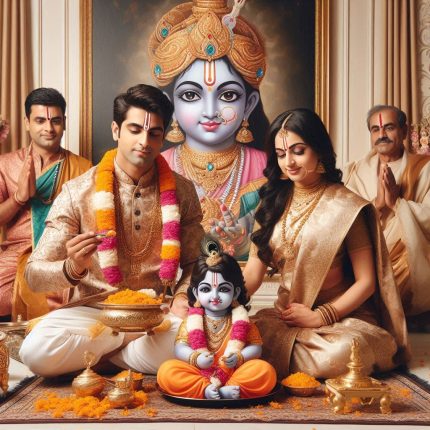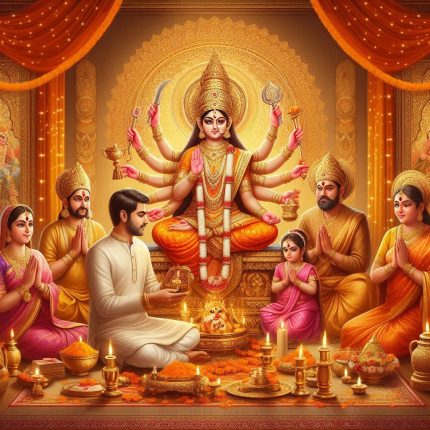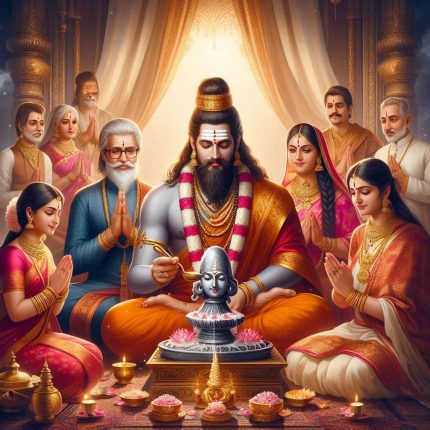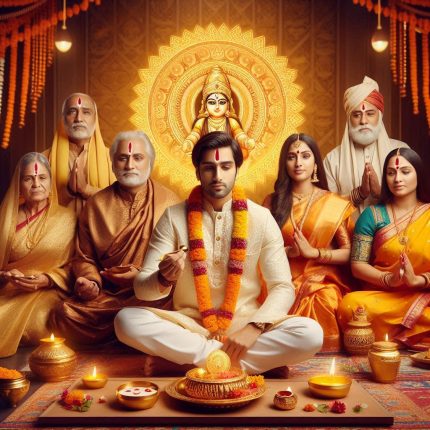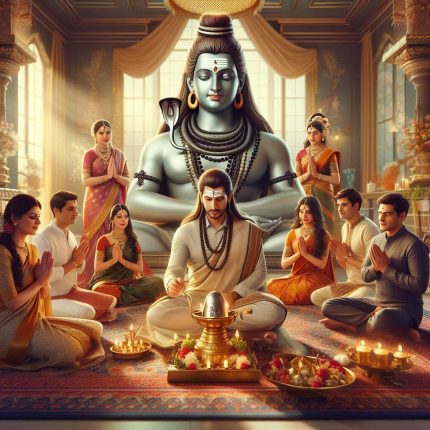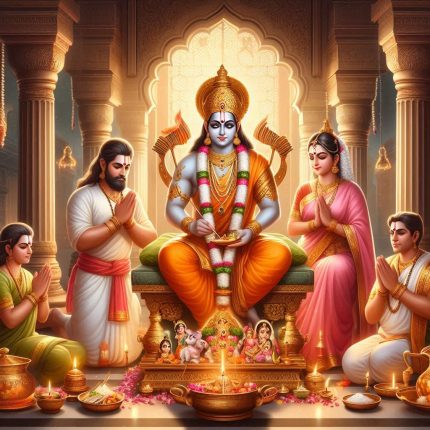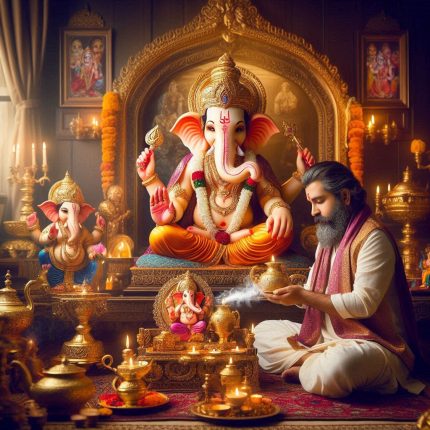Durga Puja: A Celebration of Power and Devotion
Samagri
for Puja:
Haldi [organic] (20gm), Kumkum [organic] (20gm), Tulsi Mala (1), Diya Batti (5), Beetle Nuts (5), Desi Ghee (20ml), Honey (20ml), Jaggery (Gudh) (20gm), Akshata [Yellow rice] (20gm), Yagno-paveetha (5), Karpoora [camphor] (5Tabs), Red/White/Yellow Cloth(1 mtr), Prasad [Laung, Elaichi, Mishri] (20gm), Mouli (25mtr), Ganga Jal (15ml), Durva [fresh] (1), Agarbatti (6)/Dhoop (2), Dakshina (100INR), God Idols (pair), Sambrani (2), Sambrani Holder (1), Kalash [small copper] (1), Panchpatra [small copper] (1), Diya Holder (2), Panchamrit spoon (1), Karpoora Holder(1), includes perishables [Beetle Leaves [fresh] (9), Flowers [fresh] (incl mala), Tulsi [fresh], Mango Leaves [fresh] (7)]
Small Havan:
Cow Dung Cake (2), Mango Wood (250gm), HavanSamagri [20+ Grganic Herbs] (100gm), Ghee (20ml)
Yajman to provide:
Curd (100gm), Milk (100ml), Mithai (250gm), Fruits [5types], Coconut (1), HavanKund, SuchiSarva (Havan Spoon) (1), Kalash [big] (1), Bowl [preferably copper/silver] (1), Spoon [preferably copper/silver] (1), Utensils [2 big Plates (for Aarti/Samagri), disposable Plates, Bowls & Spoons], First solid food (preferably Kheer or Payasam)
Importance and Significance of Durga Puja
Durga Puja represents the triumph of dharma (righteousness) over adharma (evil). It is not only a religious occasion but also a cultural celebration that showcases the artistic heritage of the region. The festival serves as a reminder of the resilience and empowerment of women, as Goddess Durga is often seen as a symbol of strength and protection. The rituals and festivities foster a sense of community and devotion, reinforcing the bonds of love and togetherness among families and friends.
Benefits of Durga Puja
- Spiritual Growth: The rituals help devotees connect with their spiritual selves and deepen their understanding of faith and devotion.
- Cleansing of Negativity: Engaging in the puja rituals purifies the mind and soul, allowing individuals to release negative thoughts and emotions.
- Community Bonding: The festival brings people together, promoting unity and harmony within communities as they participate in collective celebrations.
- Cultural Expression: Durga Puja is a showcase of art, music, and dance, allowing for the celebration of cultural identity and traditions.
Occasions to Perform Durga Puja
Durga Puja is celebrated during the month of Ashwin (September-October), specifically during the Hindu calendar month of Ashwin. The main rituals take place over five days, culminating in Vijayadashami, which marks the goddess’s victory over the buffalo demon Mahishasura.
Durga Puja Vidhi (Procedure)
- Preparation: The days leading up to Durga Puja involve cleaning homes and setting up beautifully decorated pandals (temporary structures) for the idol of Goddess Durga.
- Setup: In homes and community spaces, idols of Goddess Durga are installed, adorned with flowers and offerings. An altar is created with images of the goddess and her children.
- Invocation: The puja begins with the invocation of the goddess, chanting mantras, and offering prayers for strength and protection.
- Offering Prayers: Devotees offer prayers, flowers, fruits, and sweets to the goddess, expressing gratitude and seeking her blessings.
- Rituals: Key rituals include the chanting of the Durga Saptashati (Chandi Path), offering of aarti, and performing cultural dances and music to celebrate the goddess.
- Visarjan: On Vijayadashami, the festival concludes with the immersion (visarjan) of the Durga idol in water, symbolizing her return to Mount Kailash, leaving behind blessings for devotees.
- Celebration: The festivities are accompanied by feasting, traditional dances, and cultural programs, fostering a spirit of joy and community.
Durga Puja Shubh Muhurat
The Shubh Muhurat for Durga Puja rituals is determined based on astrological considerations, often guided by the lunar calendar. Specific timings for each ritual are chosen to ensure maximum auspiciousness and blessings.
By celebrating Durga Puja, devotees honour the divine feminine, seeking strength, courage, and blessings for themselves and their families. This festival not only celebrates religious devotion but also the rich cultural heritage and communal spirit that unite people in joyous celebration.

